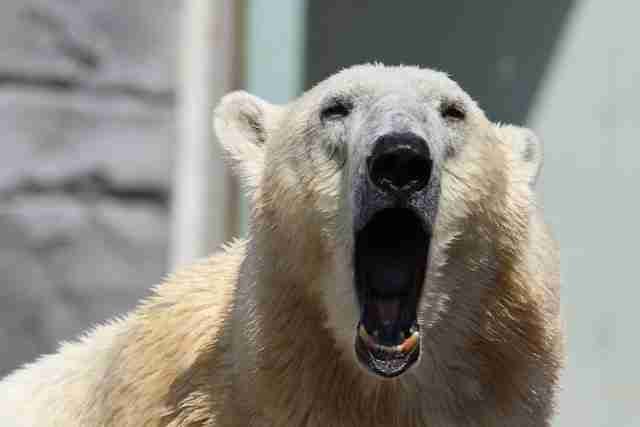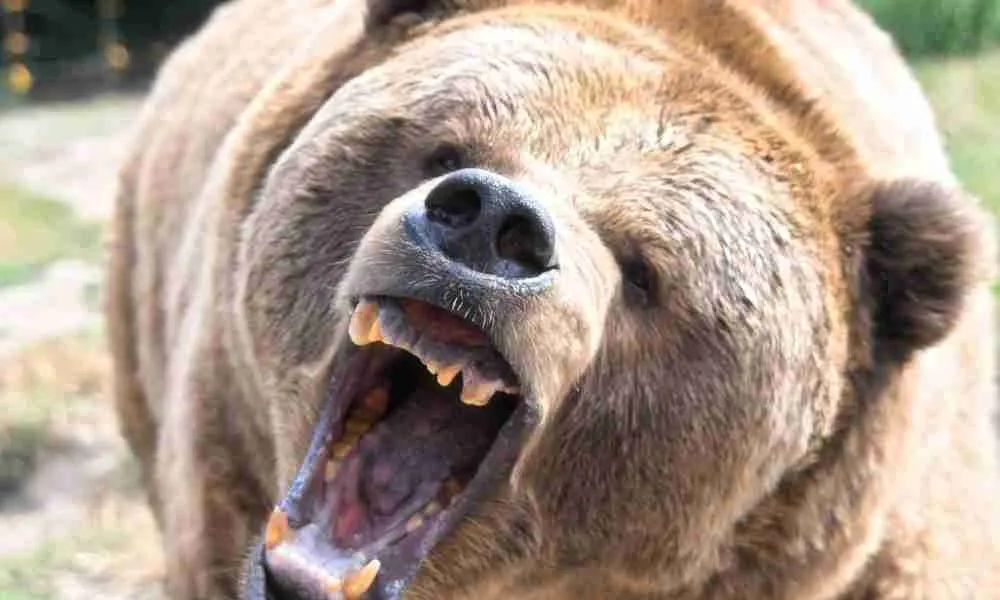Have you ever thought about the characteristics of a bear’s teeth? In this article, we will talk about the characteristics of this mammal’s teeth, together with cool facts!
Let us dive deeper:
Are Bears Born With Teeth?
No, bears are never born with teeth. In the same way, this mammal comes without any visual capabilities. Just like most of the other animals around, the teeth of bears come after some time.
Meanwhile, the bear cub remains helpless until the period for teeth growth arrives.
When Do Cubs Usually Get Teeth?
The bear cubs usually begin getting their teeth exactly five months after birth. The teeth of these cubs grow gradually, increasing in number.
By 18 months, the bear cubs usually have a complete set of teeth. The complete set of teeth in these cubs at the 18th month is always the same as in adult bears.
A cub’s first step of teeth is just temporary. Like humans, kids grow milk teeth, and after a certain period, they come out.
The milk teeth removal in humans is the same in bear cubs. The temporary teeth in bear cubs come off eventually.
Permanent teeth follow after, thus covering the space with more lasting teeth.
How Many Teeth Do Bears Have?
| Bear type | Number of teeth (Average) |
| Polar bear | 42 |
| Black bear | 42 |
| Grizzly bear | 42 |
| Sloth bear | 40 |
| Sun bear | 42 |
| Panda bear | 42 |
On average, bears have a total of 42 teeth. Like in humans, the total number of bears’ teeth includes all four types of teeth.
Bears have a total of:
- 12 incisors
- 4 canines
- 16 premolars
- 10 molars.
In other special cases, some bear species usually have different numbers of teeth in total.
A good example of a bear with different teeth sets is the sloth bear. This type of bear has a total of 40 teeth as an adult. This number of teeth differs from the other bears since the two teeth differ.
All black bears have a dental formula of molars 2/3, premolars 4/4, canines 1/1, and incisors 3/3.
In the early stages of black bear cubs, they usually have the same number of teeth, just like dogs.
How Strong are Bears’ Teeth?
Despite bears’ teeth not being long, you cannot underestimate their strength. The bite from a bear’s teeth may reach 1,200 PSI.
With such a force, these teeth have the power to break bones and even deform a metal. This measurement of the teeth’ strength is mostly in polar bears.

Other bears, such as the grizzly bear, may have a maximum strength of 975 PSI. This strength is capable of breaking bones and crushing branches.
The grizzly bear’s teeth may not bite as strongly as the polar bear’s, but its teeth are quite sharp. The Sharpness of these teeth compensates for the strength.
On the other hand, black bears may bite to a strength of up to 800 PSI. Another force of up to 560 pounds (254 Kilograms) backs up the teeth. The additional force makes the bite from these bears stronger than even lions.
How Big is a Bears Teeth?
Almost all bear species have teeth quite small, ranging around one inch. Many people think bears have huge teeth due to their huge physical appearance. In a real sense, size rarely goes with body size.
All bears have small teeth, usually quite strong on the other side. These teeth are usually very sharp and strong to increase effectiveness every time they get used.
The teeth of a young bear may range around 0.59 inches (15mm long). This length gradually increases as the bear approaches the adult stage.
What is the Shape of a Bears Teeth?
The shape of a bear’s teeth mostly depends on the incisors since most of the other teeth look the same in most bears.
The incisors of a bear have a chisel-like shape. These incisors are usually at the front section of the bear’s mouth. Other types of bears have incisors that have different shapes.
A good example of such a bear is the grizzly bear.
The grizzly bear has slightly curved incisors. This curvy nature of the teeth makes it very different from other common bears.
Black bears also have incisors that are slightly shorter than the other bears. These incisors are also less curved than those of other bears.
How Do Bears Use Their Teeth?
Bears use their teeth for either biting, tearing, or crushing. These mammals have different types of teeth, which work for many reasons.
Four types of teeth come in to perform different roles in these bears. Canines, Incisors, Premolars, and Molars are the four main types of teeth in bears.
Below is an in-depth view of how different teeth play different roles:
Canines
The canines of bears are on the near front sides of all types of bears. These canines usually assist in tearing, biting, and cutting food. These canines play these several roles, unlike humans, where they are only for tearing food.
Incisors
Just like in humans, the incisors of a bear work by cutting into food. Unlike the canines that play several roles, the incisors play only a single role.
Premolars
These teeth work by slicing and grinding food into smaller pieces. In humans, the premolars only play one role, which is grinding food. In bears, the premolars’ role is quite extensive.
While still in the premolars, a diastema is usually an additional feature. The diastema is a gap that assists in chewing twigs and stems.
Molar
Molars play the most important role in bears. These types of teeth grind food completely before swallowing. The molars are on both sections of a bear’s mouth, thus increasing their efficiency.
Recap:
Despite bears being born without teeth, they usually end up with very strong ones. These teeth may seem smaller, but their efficiency ranks on another level.
Other natural features usually come in to increase the functionality of the teeth. The additional features aid a lot in accomplishing any task of the bear’s mouth.
If you find this article helpful, you can share it.

